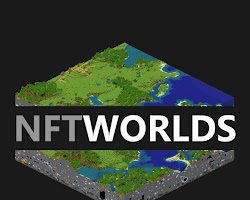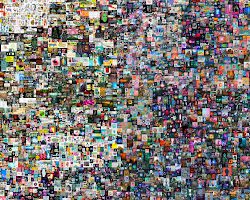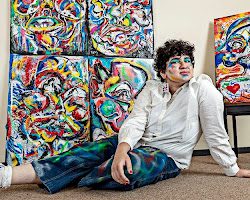Top 10 NFT Artists Influencing The Metaverse Experience

NFT Artists refers to individuals who create and sell non-fungible tokens (NFTs) as a form of digital artwork. NFTs have gained significant attention and popularity in recent years as a new way to buy, sell, and collect digital assets. Unlike traditional art forms, which are physical and can be reproduced, NFTs are unique digital assets that exist on a blockchain network, typically using the Ethereum blockchain.
NFT Artists utilize their creativity and digital skills to produce various types of artwork that can be tokenized as NFTs. These artworks can include digital illustrations, animations, virtual reality experiences, music, videos, and even virtual real estate. By tokenizing their art, artists can establish provenance, authenticity, and scarcity for their digital creations, allowing them to sell them directly to collectors without the need for intermediaries like galleries or auction houses.
Creating an NFT involves minting a digital asset on a blockchain platform. Ethereum’s blockchain, specifically the ERC-721 and ERC-1155 standards, is currently the most widely used for NFT creation, although other blockchain networks like Binance Smart Chain and Flow are also gaining popularity.
NFT Artists typically follow a process that involves conceptualizing and creating their digital artwork using various tools and software. This can include digital art programs like Adobe Photoshop, Illustrator, or Procreate for illustrations, 3D modeling software like Blender or Maya for creating 3D assets, or music production software for composing and producing music. The level of technical expertise required varies depending on the medium and complexity of the artwork.
Once the artwork is complete, the artist prepares it for tokenization by selecting a marketplace or platform to mint and sell their NFTs. Some popular NFT marketplaces include OpenSea, Rarible, SuperRare, and Foundation. These platforms provide the necessary infrastructure for artists to mint and list their NFTs for sale. Artists typically pay fees for minting their NFTs and may also have to go through a curation process before their artwork is accepted on some platforms.
When minting an NFT, the artist defines various attributes and metadata associated with the artwork. This can include the title, description, edition number (if it’s a limited edition), royalties, and any additional unlockable content that may be included with the NFT. The artist also sets the price at which they are willing to sell the NFT. Once minted, the NFT is assigned a unique token ID that represents ownership and authenticity.
After minting, the NFT is listed for sale on the chosen marketplace, where collectors can browse and purchase the artwork using cryptocurrency, usually Ether (ETH). When a collector buys an NFT, the ownership is transferred to their digital wallet address, and the transaction is recorded on the blockchain, providing a transparent and immutable record of ownership.
NFT Artists can earn revenue through the initial sale of their NFTs, as well as through secondary sales. Unlike traditional art, where artists typically receive a one-time payment for their work, NFTs allow artists to earn royalties on subsequent resales. These royalties are automatically transferred to the artist’s wallet every time the NFT is sold in the secondary market, providing ongoing income even after the initial sale.
In addition to selling NFTs, NFT Artists may also engage with their collectors and the broader community through social media platforms, virtual exhibitions, and collaborations. Building a strong online presence and marketing their work is crucial for artists to gain visibility and attract potential buyers and collectors.
The NFT art market has experienced rapid growth and has provided opportunities for artists to monetize their digital creations in new and exciting ways. However, it’s worth noting that the market is also subject to fluctuations, and the value of NFTs can vary significantly over time. Nevertheless, for
talented NFT Artists, the growing interest in digital art and the potential for increased exposure and revenue make it an appealing avenue for showcasing and selling their work.
[Ailis in the metaverse]
We have sponsored an NFT art exhibition hosted within the metaverse in collaboration with "New Drops!"
This exhibition is themed around a collection of kawaii art with works from over 53 artists. pic.twitter.com/lTGJ3jN2Vv
— IZUMO (@IZUMOofficial) May 9, 2023
Also read: The Top 8 Female NFT Artists To Watch For A Impressive Artwork
How NFT Artists are Influencing the Metaverse Experience
NFT Artists are playing a significant role in shaping and influencing the metaverse experience. The metaverse refers to a virtual world or immersive digital environment where users can interact with each other and digital objects in real-time. It encompasses various platforms, games, virtual reality experiences, and social spaces.
Here are some ways in which NFT Artists are impacting the metaverse experience:
1. Virtual Land and Architecture: NFT Artists are creating virtual land and architectural designs within the metaverse. Through the use of blockchain technology and NFTs, artists can tokenize and sell virtual plots of land, which users can own and develop within the metaverse. These virtual lands can be transformed into unique and imaginative spaces, featuring custom-built structures, art installations, and interactive experiences. NFT Artists bring their creative vision to the metaverse by designing and constructing visually stunning and immersive virtual environments.
2. Virtual Fashion and Avatars: NFT Artists are revolutionizing the concept of virtual fashion and avatar customization within the metaverse. Through NFTs, artists can create and sell digital wearables, accessories, and skins that users can purchase and apply to their avatars. This allows individuals to express their unique style and personality within virtual worlds. NFT Artists collaborate with fashion designers and 3D artists to create high-quality, limited-edition digital fashion items that users can collect and trade. This intersection of art, fashion, and technology enhances the overall aesthetic and self-expression within the metaverse.
3. Digital Art Galleries and Exhibitions: NFT Artists are bringing their artwork into the metaverse through digital art galleries and exhibitions. Instead of traditional physical galleries, artists can showcase their digital creations in virtual spaces accessible to a global audience. These virtual galleries allow users to explore and appreciate artwork in a dynamic and interactive manner. NFT Artists can curate exhibitions, host openings, and interact with visitors, creating a vibrant art community within the metaverse. Additionally, the ownership and provenance of digital artworks are secured through NFTs, providing artists with a transparent and traceable record of their creations.
4. Virtual Performances and Events: NFT Artists are leveraging the metaverse to host virtual performances and events. Musicians, DJs, and other performers can create virtual concerts and immersive experiences using NFT technology. These events allow for unique audiovisual experiences and interactions with the audience. NFT Artists can sell tickets as NFTs, granting access to exclusive areas or providing special benefits within the virtual event. The metaverse enables artists to reach a global audience, breaking geographical boundaries and creating shared experiences in a digital realm.
5. Collaborations and Collectibles: NFT Artists are collaborating with other creators, brands, and influencers within the metaverse to produce exclusive digital collectibles and limited-edition collaborations. These collaborations can include digital art pieces, virtual merchandise, or even in-game assets. Through NFTs, artists and collaborators can establish scarcity and authenticity, making these items valuable and desirable to collectors. The metaverse acts as a platform for these collaborations, fostering creativity, innovation, and new opportunities for artists and their audience.
In summary, NFT Artists are pushing the boundaries of creativity within the metaverse. They are transforming virtual spaces into immersive, interactive, and visually stunning environments through virtual land, fashion, digital art, performances, and collaborations. By leveraging blockchain technology and NFTs, artists can establish ownership, scarcity, and provenance for their digital creations, providing new opportunities for monetization and engagement within the metaverse.
Top 10 NFT Artists Influencing the Metaverse Experience
The metaverse is a rapidly growing digital space, and NFTs are playing a major role in its development. NFT artists are creating all sorts of digital assets for the metaverse, from virtual clothing and accessories to entire worlds.
Here are 10 of the top NFT artists who are influencing the metaverse experience:
- Beeple
Beeple is one of the most well-known NFT artists in the world. His work is known for its political and social commentary, and he has sold several NFTs for millions of dollars.

- Pak
Pak is an anonymous NFT artist who is known for his minimalist and conceptual work. His NFTs often sell for high prices, and he has been credited with helping to popularize the NFT art market.
- Ming Thein
Ming Thein is a digital artist who is known for his photorealistic NFTs. His work often features stunning landscapes and cityscapes, and he has been praised for his attention to detail.

- XCOPY
XCOPY is a pseudonymous NFT artist who is known for his dark and dystopian NFTs. His work often features pixellated figures and landscapes, and it has been praised for its unsettling atmosphere.
- Fewocious
Fewocious is a teenage NFT artist who is known for his vibrant and colorful NFTs. His work often features anime-inspired characters and landscapes, and he has been praised for his unique style.

- Trevor Jones
Trevor Jones is a British artist who is known for his animated NFTs. His work often features animals and landscapes, and it has been praised for its beauty and realism.
- Anna Zhilyaeva
Anna Zhilyaeva is a Russian artist who is known for her VR NFTs. Her work often features immersive and interactive environments, and she has been praised for her innovative use of technology.

- Hackatao
Hackatao is a collective of two Chinese artists who are known for their playful and irreverent NFTs. Their work often features animals and robots, and it has been praised for its humor and creativity.
- Rich Lord
Rich Lord is a British artist who is known for his geometric NFTs. His work often features abstract patterns and shapes, and it has been praised for its beauty and complexity.

These are just a few of the many NFT artists who are influencing the metaverse experience. As the metaverse continues to grow, we can expect to see even more innovative and creative NFT art being created.
Benefits of Metaverse for NFT Artists
The metaverse offers several benefits for NFT Artists, opening up new opportunities and avenues for their creative expression, visibility, and revenue generation. Here are some key benefits:
1. Global Reach and Exposure: The metaverse provides NFT Artists with a global audience and exposure. Through virtual platforms, social spaces, and online communities, artists can showcase their artwork to a diverse and international audience. This global reach allows artists to connect with collectors, enthusiasts, and collaborators from around the world, expanding their network and increasing the visibility of their work.
2. Direct Interaction with Collectors: The metaverse enables NFT Artists to directly interact with their collectors and audience. Artists can engage in real-time conversations, receive feedback, and build personal connections with their supporters. This direct interaction fosters a sense of community and allows artists to gain insights into the preferences and interests of their audience, enabling them to refine their artistic practice and create works that resonate with their fans.
3. Monetization Opportunities: The metaverse offers various monetization opportunities for NFT Artists. Artists can sell their artwork as NFTs, allowing them to retain ownership and earn royalties on secondary market sales. Additionally, artists can collaborate with brands, influencers, and virtual world developers to create limited-edition digital collectibles, fashion items, or in-game assets. These collaborations can lead to licensing deals, partnerships, and additional revenue streams for artists.
4. Tokenized Virtual Property: The metaverse allows NFT Artists to tokenize and sell virtual property, such as virtual land or virtual architecture. Artists can create unique and immersive virtual environments, sell them as NFTs, and earn revenue from the initial sales and subsequent transactions. This enables artists to monetize their architectural and design skills within the metaverse, offering a new avenue for income generation.
5. Enhanced Artistic Expression: The metaverse provides NFT Artists with a rich and immersive canvas for artistic expression. Artists can push the boundaries of traditional art forms by exploring new mediums, interactive elements, and immersive experiences. The metaverse enables artists to create dynamic, multisensory, and interactive artworks that transcend the limitations of physical spaces, allowing for a more engaging and participatory artistic experience.
6. Collaboration and Cross-disciplinary Opportunities: The metaverse fosters collaboration and cross-disciplinary opportunities for NFT Artists. Artists can collaborate with other artists, musicians, developers, and brands to create unique virtual experiences, events, and products. This collaborative approach encourages innovation, experimentation, and the blending of different artistic disciplines, resulting in groundbreaking and interdisciplinary creations.
7. Preservation and Provenance: NFTs and blockchain technology offer NFT Artists a secure and transparent way to preserve and establish the provenance of their digital artwork. The blockchain ensures a permanent and immutable record of ownership, providing authenticity and provenance for each NFT. This is particularly important in the digital art realm, where reproductions and forgeries can be easily created. NFTs and the blockchain provide artists with a reliable way to protect their creations and establish their place in art history.
In conclusion, the metaverse presents numerous benefits for NFT Artists, including global exposure, direct interaction with collectors, monetization opportunities, enhanced artistic expression, collaboration prospects, and secure provenance for their digital artworks. The metaverse acts as a dynamic and inclusive platform that empowers artists to explore new frontiers, engage with a global audience, and monetize their creativity in innovative ways.
Also read: These Top 10 NFT artists have really made their way in blockchain
Future of NFT Artists and Metaverse
The future of NFT Artists and the metaverse holds immense potential for growth, innovation, and transformation. As technology continues to advance and the adoption of blockchain-based digital assets increases, we can expect the following developments:
1. Expanded Metaverse Ecosystem: The metaverse is likely to expand and evolve into a more interconnected and seamless ecosystem. Different virtual worlds, platforms, and applications will become more interoperable, allowing users to seamlessly navigate and transfer their digital assets and identities across various metaverse environments. This interconnectedness will create new opportunities for NFT Artists to reach larger audiences and collaborate across multiple metaverse platforms.
2. Enhanced Immersive Experiences: Advancements in virtual reality (VR) and augmented reality (AR) technologies will lead to more immersive and interactive experiences within the metaverse. NFT Artists will be able to create artworks and virtual environments that offer heightened sensory engagement and a deeper sense of presence. Users will have the ability to explore virtual art galleries, interact with 3D sculptures, and participate in live performances, blurring the lines between physical and digital art experiences.
3. Integration of Artificial Intelligence (AI): The integration of AI technologies within the metaverse will open up new creative possibilities for NFT Artists. AI algorithms can be used to generate and assist in the creation of digital artwork, leading to the emergence of AI-assisted or AI-generated NFTs. Artists may harness AI to enhance their creative process, generate personalized recommendations for collectors, or even create virtual art assistants that interact with users within the metaverse.
4. Tokenization of Real-World Assets: While NFTs have primarily been associated with digital artworks, we can expect the tokenization of real-world assets to gain traction within the metaverse. NFT Artists may tokenize physical art pieces, real estate, fashion items, or even intellectual property rights. This tokenization will enable artists to bridge the gap between the physical and digital realms, providing new ways for collectors to own and trade assets within the metaverse.
5. Enhanced Social and Community Engagement: The metaverse will facilitate enhanced social interactions and community engagement for NFT Artists. Artists will be able to host virtual exhibitions, events, and performances, allowing for real-time interactions with their fans and collectors. Community-driven initiatives such as collaborative art projects, virtual artist residencies, and shared creative spaces will flourish within the metaverse, fostering a sense of belonging and collaboration among artists and enthusiasts.
6. Sustainability and Carbon Footprint Considerations: As the popularity of NFTs and the metaverse grows, there will be a greater focus on sustainability and reducing the carbon footprint associated with blockchain technologies. NFT Artists and platforms may explore more eco-friendly blockchain solutions, such as transitioning to proof-of-stake (PoS) blockchains or exploring layer 2 scaling solutions. Additionally, artists may incorporate sustainability themes within their artwork and advocate for eco-conscious practices within the metaverse.
7. New Economic Models and Governance Structures: The metaverse will likely give rise to new economic models and governance structures. Artists may explore decentralized autonomous organizations (DAOs) or blockchain-based governance systems to collectively manage and curate virtual art spaces, distribute royalties, and make decisions regarding the metaverse’s development. This shift towards decentralized governance will empower artists and participants to have a greater say in shaping the future of the metaverse.
In conclusion, the future of NFT Artists and the metaverse is a dynamic landscape where technology, creativity, and community converge. Artists will continue to push the boundaries of digital art, leveraging advancements in VR, AI, and blockchain technologies. The metaverse will provide artists with expanded reach, immersive experiences, and novel ways to monetize their creations. As the metaverse evolves, it will redefine how we create, experience, and engage with art, bringing forth new opportunities and possibilities for artists and participants in the digital realm.
Also read: 10 Best NFT Marketplaces for Artists and Collectors in 2023



























































